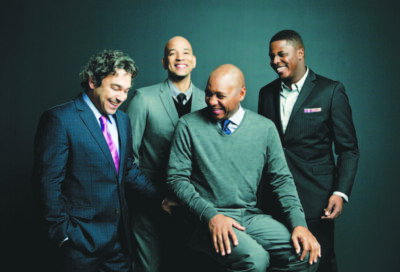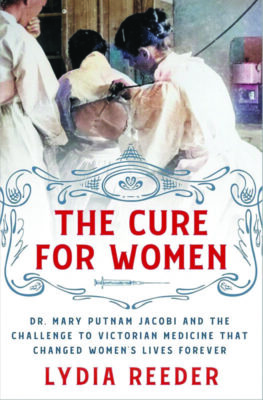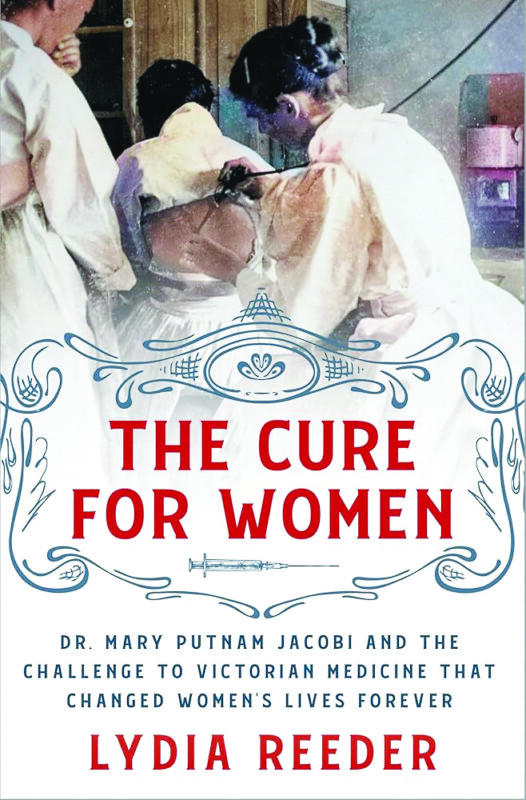The Cure for Women, by Lydia Reeder (St. Martin’s Press, 286 pages)
Given some of the past practices of medicine, bloodletting and leeches and such, it’s a wonder any of us are alive today. What’s even more disturbing is how recent some of these strange medical practices are.
Take, for example, the “rest cure for women,” a protocol of the 19th century in which women suffering from a raft of maladies — but mainly being thin and “short of blood” — were told to take to their beds, sometimes for months, where they were fed milk and raw eggs, and forbidden social interaction and “brain work.”
While many women were actively harmed by such treatments, there were far worse things done to women under the guise of medicine in that era, even by physicians ostensibly devoted to women’s health. The doctor credited with inventing the speculum, for example, once wrote, “If there was anything I hated, it was investigating the organs of the female pelvis.” This physician was a showman in the vein of P.T. Barnum, performing operations in front of an enthralled audience, sometimes with the patients (often enslaved women) awake and screaming.
All this was occurring in a century in which smart and capable women were being denied entry to medical school because of the belief that they were not intellectually or psychologically equipped for the work, even though female midwives had been delivering babies for millennia.
The first woman to graduate from an American medical school, Dr. Elizabeth Blackwell, was admitted by mistake — her male classmates thought they were voting on her enrollment as a joke. Blackwell and her younger sister Emily, who also became a physician, are fairly well known today for their pioneering work improving the prospects of both patients and female doctors.
But Lydia Reeder argues that a lesser-known physician, Dr. Mary Putnam Jacobi, also deserves history’s acclaim. In The Cure for Women, Reeder explains how Jacobi, a contemporary of the Blackwells, took on the established beliefs about women’s monthly cycles, which had been used as “evidence” of women’s inferiority, and refuted them with data.
The daughter of the New York publishing scion George Palmer Putnam, Mary showed her capacity for medicine at age 9 when, after discovering a dead rat in their barn, she asked her mother if she could dissect it. Her mother said no, and her father did not think medicine was a proper career for women, but he had published a book by Elizabeth Blackwell and so consented to let his precocious daughter work at Blackwell’s clinic.
Eventually Mary enrolled at one of the few educational opportunities available to her, the Female Medical College of Pennsylvania, but she left “after she discovered she knew more about medicine than most of her instructors” and went on to graduate from a medical school in Paris. In one funny anecdote, her father sent her money there for a dress — she had to plead with him for permission to use the money to buy a microscope instead.
Upon returning to the States with a medical degree, Mary found work teaching at the Women’s Medical College of the New York Infirmary and dedicated herself to evangelizing “a scientific spirit” among women. Unfortunately for modern sensibilities, that scientific spirit also included justification of vivisection, the dissection of live animals, which Jacobi would defend. It is, perhaps, the one area in which her thinking was not visionary, although it might have helped establish her as a serious medical mind at the time.
She went on to marry a widower, Dr. Abraham Jacobi, a leading pediatrician in New York, and shortly thereafter became pregnant and worked throughout her pregnancy — refuting in real time the prevailing thought that women were suited for domestic life and reproduction solely. She began conducting research to test and challenge views about women’s capabilities during menstruation, and also to counter prescriptions of “the rest cure” as well as other medical practices of the time. She was also an advocate of sports and physical activity — as opposed to rest — to improve women’s health.
Perhaps the best story about her is that she submitted a paper arguing that menstruation does not constitute “any temporary predisposition to either hysteria or insanity” to a prestigious Harvard University competition: the Boylston Medical Prize. Per the competition’s instructions, the entry was submitted anonymously. She won, beating out hundreds of men. The work was later published by G.P. Putnam’s Sons as “The Question of Rest for Women During Menstruation” and was widely praised.
Even as Mary advanced professionally, she was lauded publicly for being an excellent housekeeper, and she had three children, and suffered the loss of two — a daughter who died at birth and a son who died at age 7 from diphtheria — a terrible loss for any parent, but especially for two doctors who could not help their child and who wound up blaming each other. The death, Reeder wrote, created a “fault line between Mary and Abraham that would, ultimately, never heal.”
Almost 20 years later, Mary Putnam Jacobi would diagnose a brain tumor in herself, and spent the last years of her life writing a case study on it titled “Description of the Early Symptoms of the Meningeal Tumor Compressing the Cerebellum, from Which the Author Died.”
Her life was clearly extraordinary and worthy of a biography, and Reeder’s treatment is more than comprehensive — to a fault, at times.
Going back and forth between history and inventive narrative, in which Reeder imagines what might have happened in a scene, was the wrong approach for a book about women devoted to science. Their imagined thoughts and actions — such as, “Elizabeth Blackwell, M.D., paced back and forth in her drab Lower West Side apartment, stopping occasionally to glance through her parlor window at the blizzard swirling outside” — are simply unnecessary. The occasional asides into this literary construction serve no purpose other than befuddling the reader.
It is also a little odd that the central character of the book is not introduced in any substantial way until chapter 3.
The author is the great-granddaughter of a midwife who cared for women and children in rural Missouri early in the 20th century, at one point plunging her fingers down a child’s throat to remove a safety pin. That midwife, Ellen Babb, no doubt had as many fascinating stories to tell as Dr. Mary Putnam Jacobi, despite the vast differences in their economic circumstances and training. The Cure for Women is a tribute to both of them — and a thumb in the eye to the 19th-century male doctor who wrote, “I said I did not believe it was best either for the sick or for society for women to be doctors.”
B- —Jennifer Graham
Featured Image: Cabin, by Patrick Hutchison

























